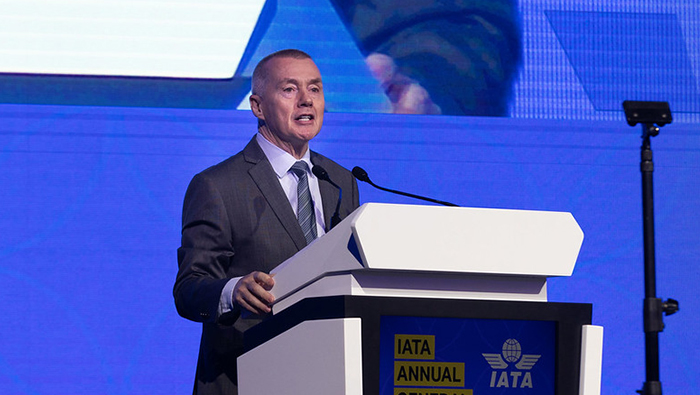
Doha: Governments have been urged to urgently put in place large-scale incentives to rapidly expand the use of sustainable aviation fuels (SAF) as the industry pursues its commitment to achieving net-zero carbon emissions by 2050.
“With effective government incentives, production could reach 30 billion litres by 2030, which would be a tipping point for SAF production and utilisation,” said Willie Walsh, IATA’s Director General in Doha, Qatar, on Tuesday.
“This would require an annual production capacity of 449 billion litres and current investments are in place to expand SAF annual production from the current 125 million litres to 5 billion by 2025,” he added.
Speaking at the International Air Transport Association annual general meeting in Doha, Qatar, Walsh said, “Governments don’t need to invent a playbook. Incentives to transition electricity production to renewable sources like solar or wind work. As a result, clean energy solutions are now cheap and widely available. With similar incentives for SAF, we could see 30 billion litres available by 2030,” he said.
“Though still far from where we need to be, it would be a clear tipping point towards our net-zero ambition of ample SAF quantities at affordable prices,” Walsh further added.
In 2021, irrespective of price (SAF is between two and four times the price of conventional jet fuel), airlines have purchased every drop of the 125 million litres of SAF that was available. And already more than 38 countries have SAF-specific policies that clear the way for the market to develop. Taking their cue from these policy measures, airlines have entered into $17 billion of forward-purchasing agreements for SAF.
Incentives to ramp up production
Further investment in production needs support from the right policies and this would boost supply and drive down costs, Walsh said.
Electricity production through solar or wind power faced similar hurdles as these technologies replaced fossil fuels. With effective policy incentives, both are now affordable and widely available.
“By applying similar incentive-based policies to SAF, governments can support global SAF production to reach 30 billion litres by the end of the decade. This would be a tipping point as it would send a clear signal to the market that SAF is playing its intended long-term role in aviation’s decarbonisation and encourage investments to drive up production and drive down the price,” he added.
The market for SAF needs stimulation on the production side. The United States is setting an example for others to follow. Its SAF production is expected to reach 11 billion litres in 2030 on the back of heavy government incentives.
Europe, on the other hand, is the example not to follow. Under its Fit for 55 initiative, the EU is planning to mandate that airlines uplift 5 per cent SAF at every European airport by 2030. Decentralising production will delay the development of economies of scale. And forcing the land transport of SAF will reduce the environmental benefit of using SAF, Walsh said.